Saudi water projects momentum holds steady
12 September 2023
 This package on Saudi Arabia’s water sector also includes:
This package on Saudi Arabia’s water sector also includes:
> Riyadh holds water pipeline bid clarifications
> Red Sea awards Amaala utility package
> Five banks agree $545m Rabigh 4 financing
> Saudi Arabia extends desalination bid deadline
> Albawani joins Jafurah water developer team
> Saudi Arabia evaluates Al-Haer wastewater bids

The Saudi water market remains the region’s largest, with $30bn-worth of projects in varying planning and procurement stages.
The sector is expected to expand further with multibillion-dollar capital expenditures allocated by the potable water and wastewater collection and treatment firm, the National Water Company (NWC), and Saline Water Conversion Corporation (SWCC), the world’s largest producer of desalinated water.
This offers great opportunities for water asset developers and engineering, procurement and construction (EPC) contractors aiming to capture a share of the kingdom’s burgeoning water projects market.
SWCC, NWC and the principal buyer of water, Saudi Water Partnership Company (SWPC), awarded over $32bn of water infrastructure and utility projects between 2013 and 2022, according to MEED Projects data.
Driving investment within the sector is the need to improve water security, a key component of Saudi Vision 2030, along with rising demand due to population and economic expansion.
Reducing the carbon footprint of the kingdom's existing seawater desalination fleet, dominated by plants running on older technologies, is also contributing to the urgency to build more energy-efficient water infrastructure.
This is matched by moves to make potable and wastewater water transmission and distribution more efficient and to minimise leakage and non-revenue water. The kingdom also needs to expand its overall water storage capacity to improve its emergency response.
Simultaneously, like most of its groundwater-scarce neighbours, there is growing pressure to adopt treated sewage effluent for agricultural and industrial applications to reduce demand for seawater desalination and comply with the kingdom’s circular carbon economy approach.
“It is an interesting time for the Saudi water sector,” says a Dubai-based water expert.
“There are many projects in the tendering phase, but there is also some degree of uncertainty in terms of how the roles of the key stakeholders could shift [in the future].”
This stems from the years-long restructuring of the sector and last year's cabinet resolution approving the transfer of water production, transportation and storage assets owned directly or indirectly by SWCC to Water Solutions Company, a wholly-owned subsidiary of the Saudi sovereign vehicle, the Public Investment Fund (PIF).
There is widespread expectation that SWCC will focus on research and development following the transfer of its assets to the PIF subsidiary, although this has not been formally announced.
Diversified clients
The lengthy restructuring of the kingdom’s water sector and rapid advance of so-called gigaprojects have diversified the profile of clients in the kingdom.
Neom and its subsidiary Enowa, SWCC transmission arm Water Transmission & Technologies Company (WTTCo) and other gigaproject developers, such as the royal commissions for Riyadh City and Al-Ula, have joined the mainstream water utility companies and municipalities in tendering new water infrastructure contracts over the past year.
In terms of projects in the pre-execution phase, SWPC is the top client, with a pipeline of projects worth at least $7bn.
SWPC is mandated to procure all water infrastructure projects in the kingdom on a public-private partnership (PPP) basis, including water desalination, wastewater treatment, transmission and reservoirs.
Its latest Seven-Year Planning Statement covering 2022-28 stipulates the procurement of about 50 independent water infrastructure projects, including several in the bid stage.
SWPC’s future projects pipeline outperforms that of NWC and SWCC. Neom, Enowa, WTTCo and the Royal Commission for Al-Ula round out the top seven clients.
 Riyadh rides power projects surge
Riyadh rides power projects surge
Independent projects
Following consecutive awards of independent water producer (IWP) and independent sewage treatment plant (ISTP) contracts between 2019 and 2021, SWPC has recently paced out the award of new contracts.
It has only awarded one contract, directly negotiated with Saudi utility developer Acwa Power for the Shuaiba 3 seawater reverse osmosis (SWRO) project in 2022. This year, it awarded another contract for the Rabigh 4 IWP scheme, in addition to the contract to develop the kingdom’s first independent water transmission pipeline, which connects Rayis and Rabigh.
SWPC is evaluating the bids it received for the contract to develop the Al-Haer independent sewage treatment plant (ISTP), the first of the round-three projects under its ISTP programme, and expects to receive bids in October for the 300,000 cubic-metre-a-day (cm/d) Ras Mohaisen IWP.
The contract to develop the kingdom’s first independent strategic water reservoir (ISWR) project is expected to be awarded this year. The Juranah ISWR has a capacity to store 2.5 million cubic metres of water. The project is anticipated to significantly boost water security, particularly in Mecca and Medina, which host several million pilgrims annually.
EPC works
Despite moves to transfer its assets to the PIF subsidiary, SWCC cemented its reputation as the world’s largest producer of desalinated water when its fleet of 30 desalination plants reached a total combined capacity of 6.6 million cm/d in 2022.
The company is not resting on its past success, having issued successive tenders for SWRO plants using an EPC model over the past 12-18 months.
In July this year, it invited bids for the contract to build a 200,000 cm/d SWRO facility in Ras al-Khair.
This came three months after it received two bids for the contract to build the second phase of the Shuaibah water desalination plant, which has an even higher capacity of 545,000 cm/d.
Around the same time in March, SWCC tendered a contract to construct a greenfield SWRO plant in Yanbu with a design capacity of 500,000 cm/d.
SWPC last awarded a major SWRO contract in mid-2021. The giant 1 million cm/d Jubail SWRO plant is being built by a team of Metito and local firm Saudi Services for Electromechanic Works.
Before this, in late 2019, it awarded a contract to construct a 400,000 cm/d SWRO plant in Shuqaiq to a team of Spain’s Acciona and Al-Rashid Trading & Contracting Company.
SWCC, though WTTCo, has also tendered multiple water transmission projects, including pipelines around Riyadh and connecting Riyadh and Ras al-Khair, Shuqaiq and Jizan and Al-Duwadimi and Atif.
In its 2022 annual report, SWCC stated that it had achieved exceptional results in supporting the Saudi Green Initiative, reducing carbon emissions, increasing operational efficiency to above 99 per cent and saving SR1.6bn ($427m) in operational costs.
The company also “increased local content in its operational efficiency by 61 per cent and demonstrated noteworthy patent accomplishments, innovations, studies and scientific publications”.
Innovation
New tourism-related developments, the expansion of industrial complexes and the need to limit carbon emissions are driving capacity-building and innovation.
The Red Sea development is completing the kingdom’s first private sector multi-utility project, which includes developing and operating a solar photovoltaic power plant, battery energy storage system, water desalination and treatment and waste recycling plants in one contract.
In addition to tendering major water transmission and distribution networks, Neom is also finalising the design for a zero-liquid discharge SWRO plant catering to the development. Enowa, Japan’s Itochu and France’s Veolia are expected to tender the project's EPC package soon.
The proposed state-of-the-art desalination plant will be powered 100 per cent by renewable energy and use advanced membrane technology to produce separate brine streams.
This will enable the production of brine-derived products, which will be developed and monetised downstream. The bigger plan includes establishing a brine processing complex in Oxagon, which could require an investment of between $15bn and $20bn.
Exclusive from Meed
-
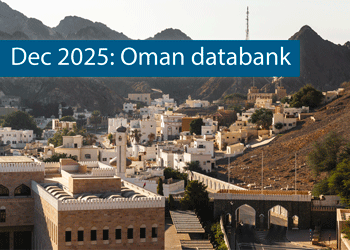 Oman’s growth forecast points upwards
Oman’s growth forecast points upwards24 December 2025
-
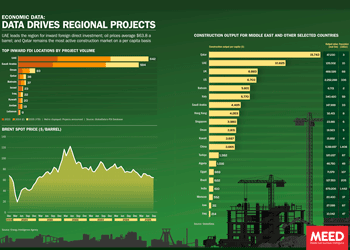 December 2025: Data drives regional projects
December 2025: Data drives regional projects23 December 2025
-
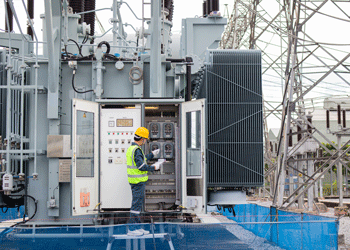 Local firm bids lowest for Kuwait substation deal
Local firm bids lowest for Kuwait substation deal22 December 2025
-
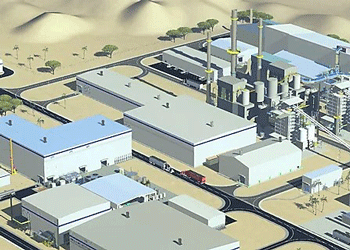 Saudi-Dutch JV awards ‘supercentre’ metals reclamation project
Saudi-Dutch JV awards ‘supercentre’ metals reclamation project22 December 2025
-
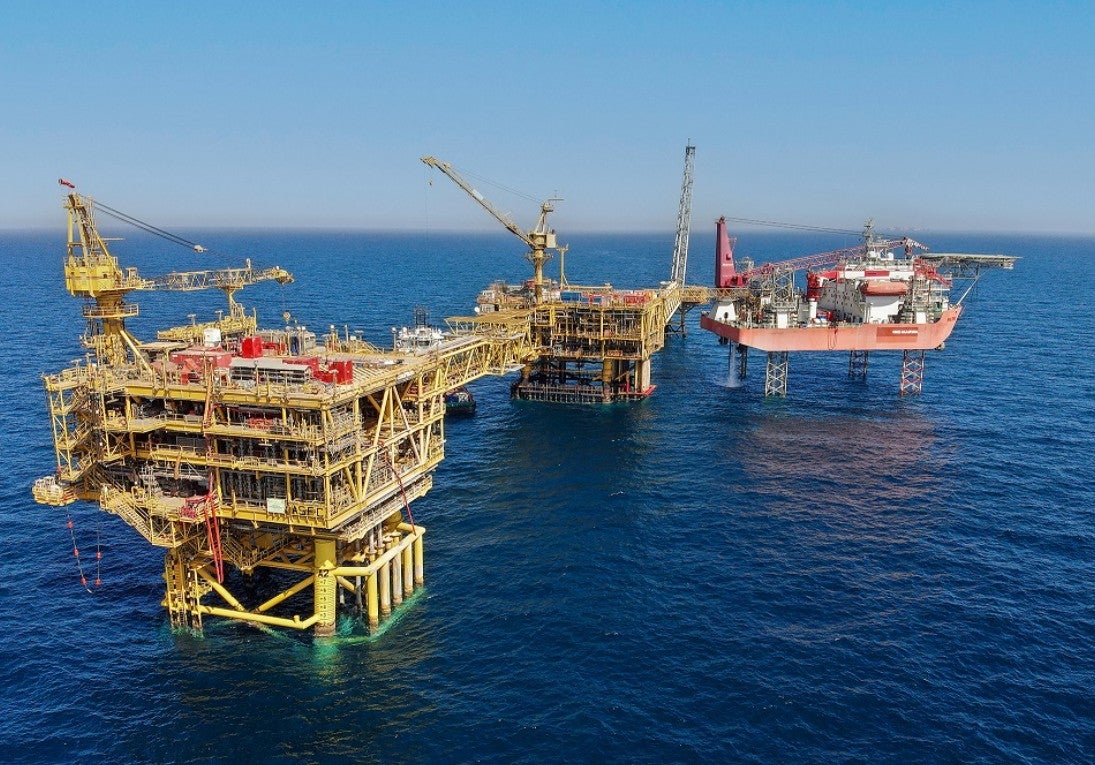 QatarEnergy LNG awards $4bn gas project package
QatarEnergy LNG awards $4bn gas project package22 December 2025
All of this is only 1% of what MEED.com has to offer
Subscribe now and unlock all the 153,671 articles on MEED.com
- All the latest news, data, and market intelligence across MENA at your fingerprints
- First-hand updates and inside information on projects, clients and competitors that matter to you
- 20 years' archive of information, data, and news for you to access at your convenience
- Strategize to succeed and minimise risks with timely analysis of current and future market trends
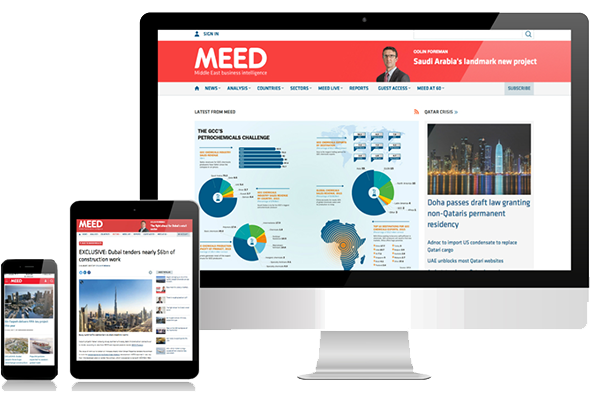
Related Articles
-
 Oman’s growth forecast points upwards
Oman’s growth forecast points upwards24 December 2025

MEED’s January 2026 report on Oman includes:
> COMMENT: Oman steadies growth with strategic restraint
> GVT & ECONOMY: Oman pursues diversification amid regional concerns
> BANKING: Oman banks feel impact of stronger economy
> OIL & GAS: LNG goals galvanise Oman’s oil and gas sector
> POWER & WATER: Oman prepares for a wave of IPP awards
> CONSTRUCTION: Momentum builds in construction sectorTo see previous issues of MEED Business Review, please click herehttps://image.digitalinsightresearch.in/uploads/NewsArticle/15306449/main.gif -
 December 2025: Data drives regional projects
December 2025: Data drives regional projects23 December 2025
Click here to download the PDF
Includes: Top inward FDI locations by project volume | Brent spot price | Construction output
MEED’s January 2026 report on Oman includes:
> COMMENT: Oman steadies growth with strategic restraint
> ECONOMY: Oman pursues diversification amid regional concerns
> BANKING: Oman banks feel impact of stronger economy
> OIL & GAS: LNG goals galvanise Oman’s oil and gas sector
> POWER & WATER: Oman prepares for a wave of IPP awards
> CONSTRUCTION: Momentum builds in construction sectorTo see previous issues of MEED Business Review, please click herehttps://image.digitalinsightresearch.in/uploads/NewsArticle/15306140/main.gif -
 Local firm bids lowest for Kuwait substation deal
Local firm bids lowest for Kuwait substation deal22 December 2025
The local Al-Ahleia Switchgear Company has submitted the lowest price of KD33.9m ($110.3m) for a contract to build a 400/132/11 kV substation at the South Surra township for Kuwait’s Public Authority for Housing Welfare (PAHW).
The bid was marginally lower than the two other offers of KD35.1m and KD35.5m submitted respectively by Saudi Arabia’s National Contracting Company (NCC) and India’s Larsen & Toubro.
PAHW is expected to take about three months to evaluate the prices before selecting the successful contractor.
The project is one of several transmission and distribution projects either out to bid or recently awarded by Kuwait’s main affordable housing client.
This year alone, it has awarded two contracts worth more than $100m for cable works at its 1Z, 2Z, 3Z and 4Z 400kV substations at Al-Istiqlal City, and two deals totalling just under $280m for the construction of seven 132/11kV substations in the same township.
Most recently, it has tendered two contracts to build seven 132/11kV main substations at its affordable housing project, west of Kuwait City. The bid deadline for the two deals covering the MS-01 through to MS-08 substations is 8 January.
https://image.digitalinsightresearch.in/uploads/NewsArticle/15305745/main.gif -
 Saudi-Dutch JV awards ‘supercentre’ metals reclamation project
Saudi-Dutch JV awards ‘supercentre’ metals reclamation project22 December 2025
The local Advanced Circular Materials Company (ACMC), a joint venture of the Netherlands-based Shell & AMG Recycling BV (SARBV) and local firm United Company for Industry (UCI), has awarded the engineering, procurement and construction (EPC) contract for the first phase of its $500m-plus metals reclamation complex in Jubail.
The contract, estimated to be worth in excess of $200m, was won by China TianChen Engineering Corporation (TCC), a subsidiary of China National Chemical Engineering Company (CNCEC), following the issue of the tender in July 2024.
Under the terms of the deal, TCC will process gasification ash generated at Saudi Aramco’s Jizan refining complex on the Red Sea coast to produce battery-grade vanadium oxide and vanadium electrolyte for vanadium redox flow batteries. AMG will provide the licensed technology required for the production process.
The works are the first of four planned phases at the catalyst and gasification ash recycling ‘Supercentre’, which is located at the PlasChem Park in Jubail Industrial City 2 alongside the Sadara integrated refining and petrochemical complex.
Phase 2 will expand the facility to process spent catalysts from heavy oil upgrading facilities to produce ferrovanadium for the steel industry and/or additional battery-grade vanadium oxide.
Phase 3 involves installing a manufacturing facility for residue-upgrading catalysts.
In the fourth phase, a vanadium electrolyte production plant will be developed.
The developers expect a total reduction of 3.6 million metric tonnes of carbon dioxide emissions a year when the four phases of the project are commissioned.
SARBV first announced its intention to build a metal reclamation and catalyst manufacturing facility in Saudi Arabia in November 2019. The kingdom’s Ministry of Investment, then known as the Saudi Arabian General Investment Authority (Sagia), supported the project.
In July 2022, SARBV and UCI signed the agreement to formalise their joint venture and build the proposed facility.
The project has received support from Saudi Aramco’s Namaat industrial investment programme. Aramco, at the time, also signed an agreement with the joint venture to offtake vanadium-bearing gasification ash from its Jizan refining complex.
Photo credit: SARBV
https://image.digitalinsightresearch.in/uploads/NewsArticle/15305326/main.gif -
 QatarEnergy LNG awards $4bn gas project package
QatarEnergy LNG awards $4bn gas project package22 December 2025
QatarEnergy LNG, a subsidiary of state-owned QatarEnergy, has awarded the main engineering, procurement, construction and installation (EPCI) contract for a major package for the second phase of its North Field Production Sustainability (NFPS) project.A consortium comprising the Italian contractor Saipem and state-owned China Offshore Oil Engineering Company (COOEC) has secured the EPCI contract for the COMP5 package. The contract value is $4bn, with Saipem declaring its share to be worth $3.1bn.
Milan-headquartered Saipem said the contract will run for about five years. The scope of work comprises engineering, procurement, fabrication and installation of two compression complexes, each including a compression platform, a living quarters platform, a flare platform supporting the gas combustion system, and the related interconnecting bridges. Each complex will have a total weight of about 68,000 tonnes.
Offshore installation operations will be carried out by Saipem’s De He construction vessel in 2029 and 2030.
MEED previously reported that the following contractors submitted bids for the NFPS phase two COMP5 package:
- Larsen & Toubro Energy Hydrocarbon (India)
- McDermott (US)
- Saipem/China Offshore Oil Engineering Company (Italy/China)
QatarEnergy LNG, formerly Qatargas, is said to have issued the tender for the NFPS phase two COMP5 package in the first quarter of the year.
Contractors submitted technical bids for the COMP5 package in late June, while commercial bids were submitted by 8 October, as per sources.
Based upon initial evaluation of bids by QatarEnergy LNG, L&TEH has emerged as the lowest bidder for the COMP5 package, followed by McDermott, with the consortium of Saipem and COOEC in third place, MEED reported in late October.
In the weeks following that, the project operator is said to have engaged all bidders for a final round of negotiations, during which the consortium of Saipem and COOEC is believed to have “clinched the deal”, according to sources.
The detailed scope of work on the COMP5 package covers the EPCI work on the following:
- Two gas compression platforms, each weighing 30,000-35,000 tonnes, plus jacket
- Two living quarters platforms, plus jacket
- Two gas flare platforms, plus jacket
- Brownfield modification work at two complexes
NFPS scheme
QatarEnergy’s North Field liquefied natural gas (LNG) expansion programme requires the state enterprise to pump large volumes of gas from the North Field offshore reserve to feed the three phases of the estimated $40bn-plus programme.
QatarEnergy has already invested billions of dollars in engineering, procurement and construction works on the two phases of the NFPS project, which aims to maintain steady gas feedstock for the North Field LNG expansion phases.
The second NFPS phase will mainly involve building gas compression facilities to sustain and gradually increase gas production from Qatar’s offshore North Field gas reserve over the long term.
Saipem has been the most successful contractor on the second NFPS phase, securing work worth a total of $8.5bn.
QatarEnergy LNG awarded Saipem a $4.5bn order in October 2022 to build and install gas compression facilities. The main scope of work on the package, which is known as EPCI 2, covers two large gas compression complexes that will comprise decks, jackets, topsides, interconnecting bridges, flare platforms, living quarters and interface modules.
The gas compression complexes – CP65 and CP75 – will weigh 62,000 tonnes and 63,000 tonnes, respectively, and will be the largest fixed steel jacket compression platforms ever built.
Following that, Saipem won combined packages COMP3A and COMP3B of the NFPS project’s second phase in September last year.
The scope of work on the combined packages encompasses the EPCI of a total of six platforms, approximately 100 kilometres (km) of corrosion resistance alloy rigid subsea pipelines of 28-inches and 24-inches diameter, 100km of subsea composite cables, 150km of fibre optic cables and several other subsea units.
Separately, QatarEnergy LNG awarded McDermott the contract for the NFPS second phase package known as EPCI 1, or COMP1, in July 2023. The scope of work on the estimated $1bn-plus contract is to install a subsea gas pipeline network at the North Field gas development.
In March this year, India’s Larsen & Toubro Energy Hydrocarbon (LTEH) won the main contract for the combined 4A and 4B package, which is the fourth package of the second phase of the NFPS project and is estimated to be valued at $4bn-$5bn.
The main scope of work on the package is the EPCI of two large gas compression systems that will be known as CP8S and CP4N, each weighing 25,000-35,000 tonnes. The contract scope also includes compression platforms, flare gas platforms and other associated structures.
LTHE sub-contracted detailed engineering and design works on the combined 4A and 4B package to French contractor Technip Energies.
NFPS first phase
Saipem is also executing the EPCI works on the entire first phase of the NFPS project, which consists of two main packages.
Through the first phase of the NFPS scheme, QatarEnergy LNG aims to increase the early gas field production capacity of the North Field offshore development to 110 million tonnes a year.
QatarEnergy LNG awarded Saipem the contract for the EPCI package in February 2021. The package is the larger of the two NFPS phase one packages and has a value of $1.7bn.
Saipem’s scope of work on the EPCI package encompasses building several offshore facilities for extracting and transporting natural gas, including platforms, supporting and connecting structures, subsea cables and anti-corrosion internally clad pipelines.
The scope of work also includes decommissioning a pipeline and other significant modifications to existing offshore facilities.
In addition, in April 2021, QatarEnergy LNG awarded Saipem two options for additional work within the EPCI package, worth about $350m.
QatarEnergy LNG awarded Saipem the second package of the NFPS phase one project, estimated to be worth $1bn, in March 2021.
Saipem’s scope of work on the package, which is known as EPCL, mainly covers installing three offshore export trunklines running almost 300km from their respective offshore platforms to the QatarEnergy LNG north and south plants located in Ras Laffan Industrial City.
Saipem performed the front-end engineering and design work on the main production package of the first phase of the NFPS as part of a $20m contract that it was awarded in January 2019. This provided a competitive advantage to the Italian contractor in its bid to win the package.
https://image.digitalinsightresearch.in/uploads/NewsArticle/15305330/main2239.jpg

